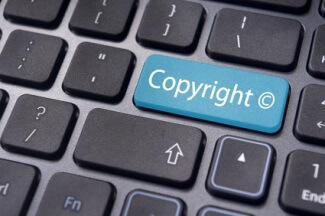 If you are the owner of a business that operates a web site, there are a few rules of thumb to keep in mind with regard to protecting your copyrights and avoiding infringing upon the copyrights of others:
If you are the owner of a business that operates a web site, there are a few rules of thumb to keep in mind with regard to protecting your copyrights and avoiding infringing upon the copyrights of others:
- Use original content. Your website should largely be comprised of original content owned by you that was either developed by you or someone who works for you. If you need to hire an outside party to create content of any kind, make sure there is a written agreement in place that clearly states that all rights in the work have been assigned to you or your company and that you are the sole and exclusive owner of the same. This agreement should also include an indemnification clause whereby the developer of the content agrees to indemnify, defend, and hold you harmless, at the developer’s expense, from and against any claims of copyright infringement asserted by third parties relating to the content procured by you from the developer. A developer who will not agree to this is a developer I suggest you do not use! There have been many infringement lawsuits against companies over photographs “found” by outside developers who (supposedly) did not realize they were subject to licensing arrangements.
- Ask for permission. If you decide to copy and paste content from another’s website to your own site, I suggest you take your hand off the mouse and take a moment to consider if you are about to do something illegal. The “fair use” defense is a very gray area of law. While critiquing an article, writing a product review, and properly quoting a few lines from a story usually qualify as “fair use,” any other kinds of use needs to considered on a case-by-case basis. It is always best to err on the side of caution and politely request permission. Did you know that Weird Al Yankovic obtains permission from all of the artists before creating derivative works of their songs even though parodies generally qualify as “fair use”? While embedding a link to another site is generally considered a far safer approach, I suggest that you seek permission for this as well.
- Use a copyright notice. While copyright becomes fixed at the moment of creation, you should still make a point to place a formal notice of copyright on your web site. The proper format consists of the copyright symbol, the word “copyright,” or both, followed by the year of creation and the owner of the work. For example, “©2012 A&BC Company.” Use of the notice not only eliminates an accused infringer’s ability to use the so-called “innocent infringement” defense, but may increase the statutory damages awarded if you were to prevail in litigation.
- Patrol your copyrights. Regularly carve out time to perform a Google search on some of the unique phrases on your site. You can also perform an image search on any photos used on your site by typing in a brief description on Google Images.
- Read the copyright ownership terms on other sites. Before uploading content to or posting original commentary directly on to other web sites, read the terms regarding copyright ownership and licensing in order to avoid inadvertently giving up or restricting your use of your own work. The information provided above is provided for informational purposes only, and should not be construed as legal advice or legal opinion. No users of the Site should act or refrain from acting on the basis of any content included in the blog written by Ms. Casey without seeking appropriate professional advice.
Mary Casey and The Harbor Law Group specialize in business and employment law, intellectual property and litigation.
